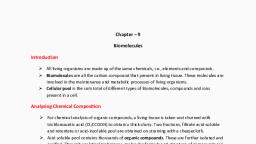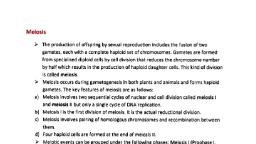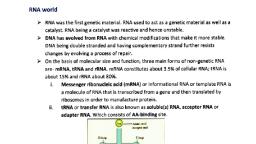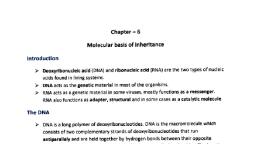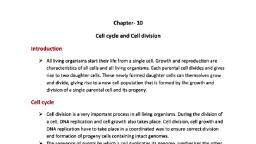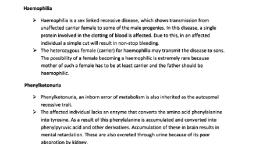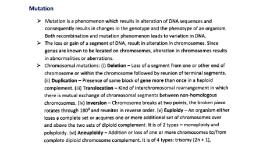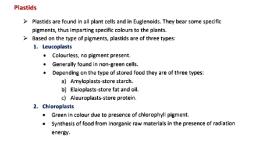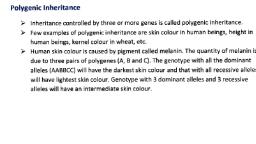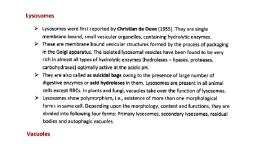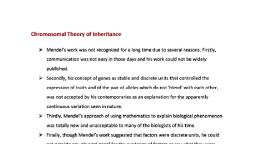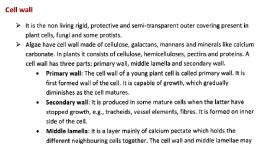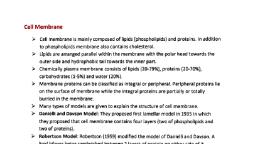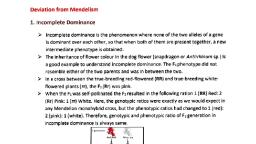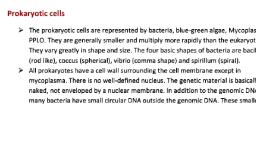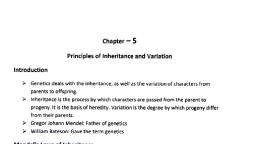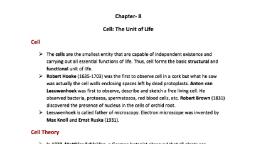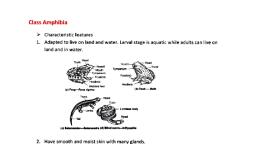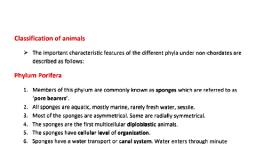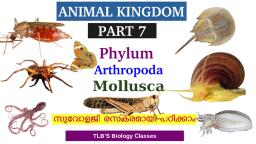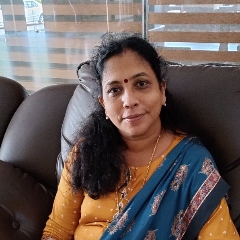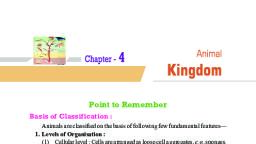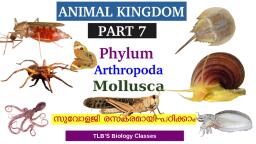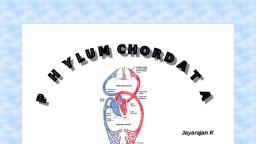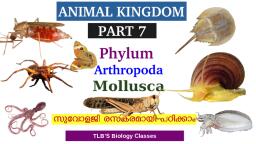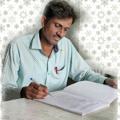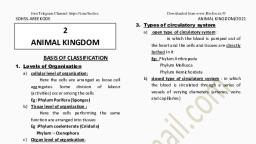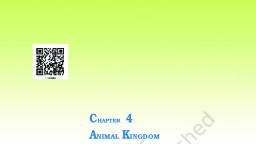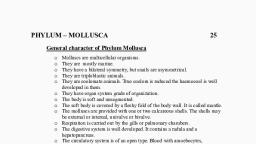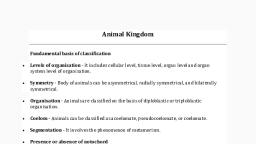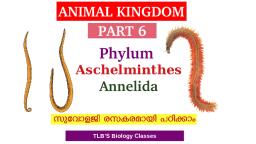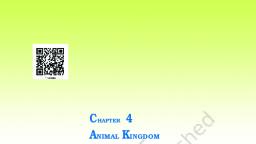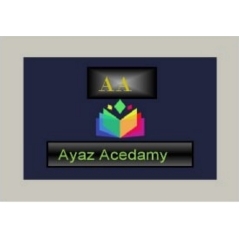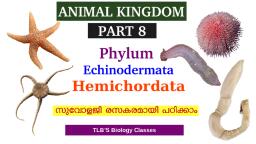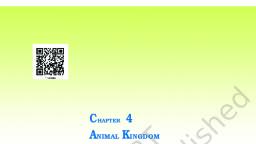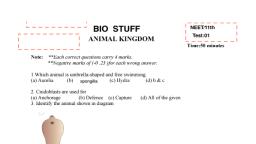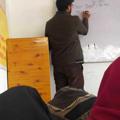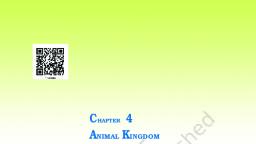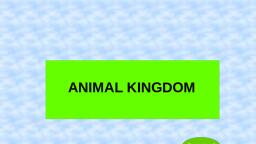Page 1 :
Phylum Annelida, 1. They may be aquatic or terrestrial; free-living and sometimes parasitic., 2. They exhibit organ-system level of body organisation and bilateral symmetry., 3. They are triploblastic, metamerically segmented and coelomate animals., , 4. Body surface is distinctly marked into segments or metameres and hence, the, phylum name Annelida., , 5. They possesslongitudinal and circular muscles which help in locomotion., , Nenes, , Hirudinaria, , 6. Except leeches, unjointed chitinous setae are often present. Aquatic annelids like, Nerels possess lateral appendages, parapodia, which help in swimming., 7. A closed circulatory system is present., 8., , Nephridla help in osmoregulation and excretion. Ammonia is chief excretory waste., , 9. Neural system consists of paired ganglia connected by lateral nerves toa double, ventral nerve cord., 10. Receptors include tactile receptors, gustatoreceptors and photoreceptors. Some, forms have statocysts., , 11. Reproduction is sexual., 12. Nerels, an aquatic form, is dioecious but earthworms and leeches are monoecious., 13. Mostly show direct development but indirect development includes trochophore, larva., 14. E.g., Nereis, Pheretima and Hirudinaria.
Page 2 :
Phylum Arthropoda, This is the largest phylum of Animalia. Over two-thirds of all named species on earth, are arthropods., 2. They have organ-system level of organisation, bilaterally symmetrical, triploblastic,, , segmented and coelomate animals., 3. The body of arthropods is covered by chitinous exoskeleton., 4. The body is divisible into head, thorax and abdomen. They have jointed appendages., 5. Respiratory organs are gills, book gills, book lungs or tracheal system., 6., , Circulatory system is of open type., , Locust, , Scorpion, , Butterfly, , Prawn, , 7. Sensory organs like antennae, eyes, statocysts or balancing organs are present., 8. Excretion takes place through Malpighian tubules., 9. They are mostly dioecious. Fertilization is usually internal. They are mostly, oviparous., , 10. Development may be direct or indirect., , 11. E.g, Economically important insects- Apis, Bombyx, Laccifer., , Vectors- Anopheles, Culex and Aedes., Gregarious, , Living, , pest- Locusta., , fossil- Limulus., , Phylum Mollusca, This is the second largest animal phylum., Molluscs are terrestrial or aquatic having an organ-system level of organisation., 3. They are bilaterally symmetrical, triploblastic and coelomate animals., 4., , Body is covered by a calcareous shell and is unsegmented with a distinct head,, muscular foot and visceral hump., , 5. A soft and spongy layer of skin forms a mantle over the visceral hump., 6. The space between the hump and the mantle is called the mantle cavity in which, , feather-like gills i.e., ctenidia are present. They have respiratory functions, 7. The mantle usually secretes an external calcareous shell which is made up of calcium, , carbonate.
Page 3 :
Pila, , Octopus, 8., , Excretory system includes 1 or 2 pairs of kidneys known as Keber's organs or Organ, of Bojanus, which open into the mantle cavity. Excretory matter is ammonia or uric, acid., , 9., , They are usually dioecious and oviparous with indirect development. It includes a, , characteristic larva, veliger, trochophore or glochidium., 10., , Eg, Pila, Pinctoda, Sepia, Loligo, Octopus, Aplysia, Dentalum and, , Chaetopleura, , Phylum Echinodermata, 1. These animals have endoskeleton of calcareous ossicles and hence, the name, , Echinodermata., 2. All are marine with organ-system level of organisation., , 3. The adult echinoderms are radialy symmetrical but larvae are bilateraly, symmetrical., , 4. They are triploblastic and coelomate animals., 5. Digestive system is complete with mouth on the lower side and anus on the upper, , side., 6. The most distinctive feature of echinoderms is the presence of water vascular, , system which helps in locomotion, capture and transport of food and respiration., 7. Water vascular system consists of madreporite or sieve plate, stone canal, water ring, or ring canal, radial canals and podia or tube feet., 8. Few echinoderms have great power of regeneration. They break off arms for, defence purpose. This phenomenon is known as autotomy., 9. Respiration takes place by body surface or gills called dermal branchiae or papulae, in most of Echinoderms like starfish., , Astenias, 10. An excretory system is absent., 11. Sexes are separate. Reproduction is sexual., , Ophiura
Page 4 :
12. Fertilization is usually external. Development is indirect with free-swimming larva., 13. Eg, Asterlas, Echinus, Antedon, Cucumaria and Ophiura., , Phylum Hemichordata, 1., , Hemichordata was earlier considered as a sub-phylum under Phylum Chordata. But, , now it is placed as a separate phylum under non-chordata., 2. Hemichordates have a rudimentary structure in the collar region called stomochord., 3. Phylum Hemichordata is believed to be connecting link between non-chordates and, chordates., 4. This phylum consists of a small group of worm-like marine animals with organsystem level of organisation., , 5. They are bilaterally symmetrical, triploblastic and coelomate animals., 6. The body is cylindrical and is composed of an anterior proboscis, a collar and a long, , trunk., 7., , Mostly ciliary feeders, digestive tract is complete., , 8. Circulatory system is of open type., 9. Respiration takes place through gills., 10. Excretory organ is proboscis gland., , 11. Central nervous system is just lie non-chordates. Brain is present in the form of, nerve ring., 12. Sexes are separate. Fertilization is external., 13. Larval stage is called tornaria which is similar to bipinnaria larva of echinodermata in, , their developmental stages., Proboscis, , Collar, , Trunk, , Fig.: Balanoglossus

